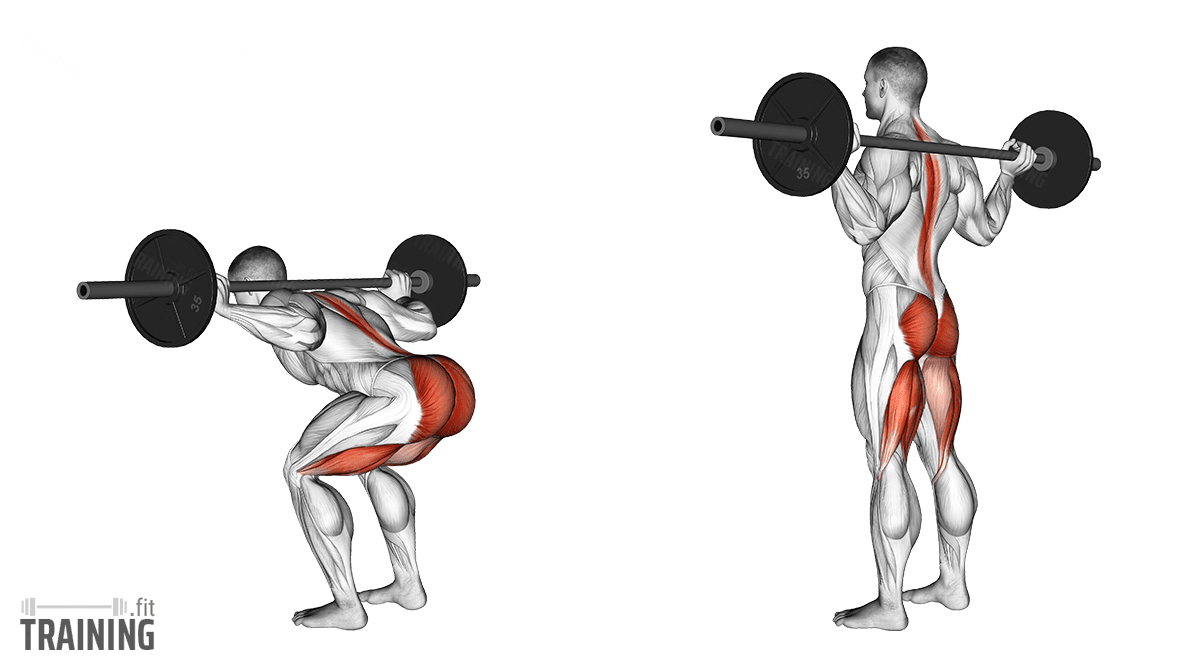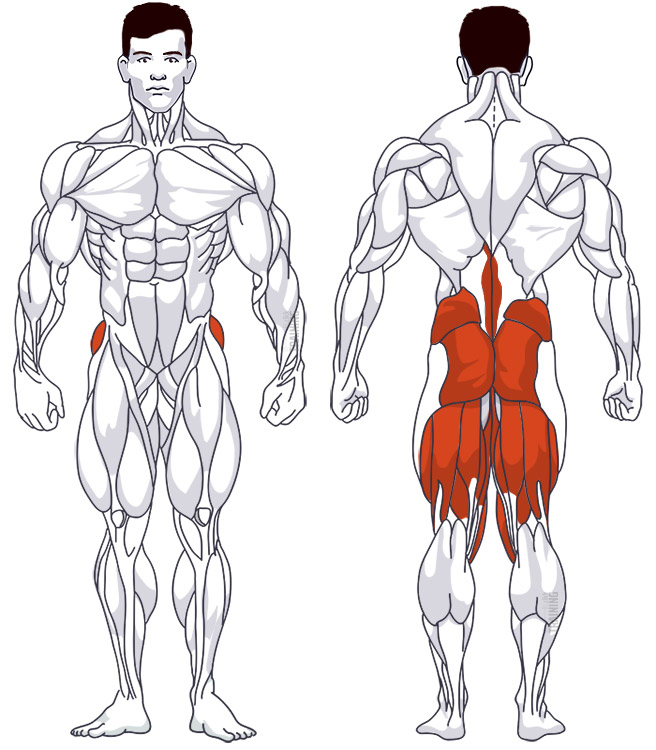Good Mornings
Compound exercise, Free weightsOverview

Main muscles
- Thigh: Thigh flexor
(Musculus biceps femoris) - Buttocks: Large gluteus maximus
(Musculus gluteus maximus) - Back: Back extensor
(Musculus erector spinae)
Good Mornings: Basics and alternatives

Involved main muscle groups:
Good Mornings
Good Mornings are an excellent exercise for targeting the lower back (back extensor or musculus erector spinae) and glutes. The movement involves bending your torso forward and straightening up again with a barbell resting on your shoulders.
This exercise shares some basic features with barbell squats: the weight rests on your shoulders and your upper body bends forward. However, unlike squats, you barely bend your knees (if at all) and limit the main movement to your hips. Your torso also bends forward much more than it does with squats.
Though Good Mornings are generally considered challenging and can pose a risk for injury if done incorrectly, performing them carefully can strengthen your lower back quite effectively. As an alternative, deadlifts are also highly efficient, but they involve a larger range of motion, putting more stress on your thighs. Straight leg deadlifts are more similar to Good Mornings in terms of movement, as they primarily train the hamstrings with stretched legs and don’t fully activate the thighs.
Other alternatives include back extensions and seated back extensions. Both exercises are easier for beginners, especially the latter on a machine.
Correct execution
Proper form is crucial for this exercise. Start with an empty barbell and avoid adding any additional weight until you’ve mastered the movement. Then, slowly increase the weight.
To make the exercise more comfortable for your neck, wrap a towel around the bar or use a neck pad.
You can perform Good Mornings with your legs fully extended or bend your knees during the bending motion. The latter option activates your hamstrings more.
Video tutorial
Step-by-step instructions
Position yourself under the barbell in the rack so it touches the middle of your neck. Firmly grip the bar with both hands.
Lift the barbell out of the rack by standing fully upright and step away from the rack.
Form a slight hollow back while keeping the rest of your back straight.
Bend your upper body forward from your hips, maintaining a straight back without arching.
Slightly bend your knees. Only bend them far enough to ensure your thighs don’t become parallel to the floor.
Lower your upper body until it’s parallel to the floor, stopping before you lose your balance.
Straighten your upper body and knees, leaving a slight bend in the knees at the end of the movement.
Common mistakes and injuries
The biggest mistake you can make during this exercise is arching your back. Keep a slight hollow back in your lower back and maintain a straight posture throughout the exercise.
Incorrect back posture, especially in the lower back, can be uncomfortable and may lead to injuries. Don’t add extra weight until you can perform the movement cleanly. If necessary, prepare your back extensor with other exercises (see above) first.